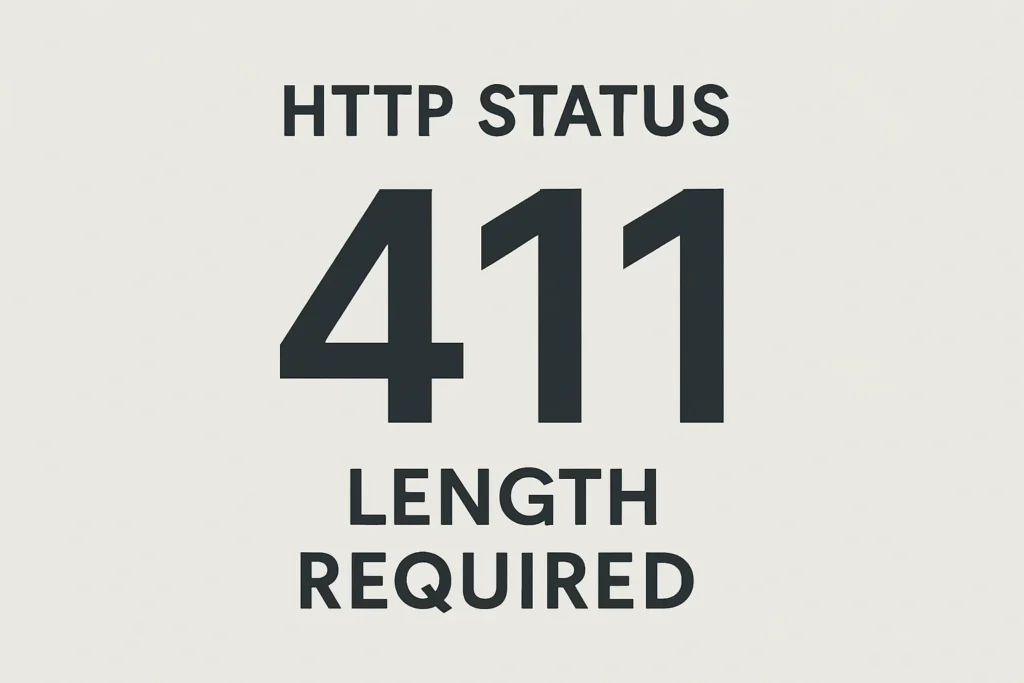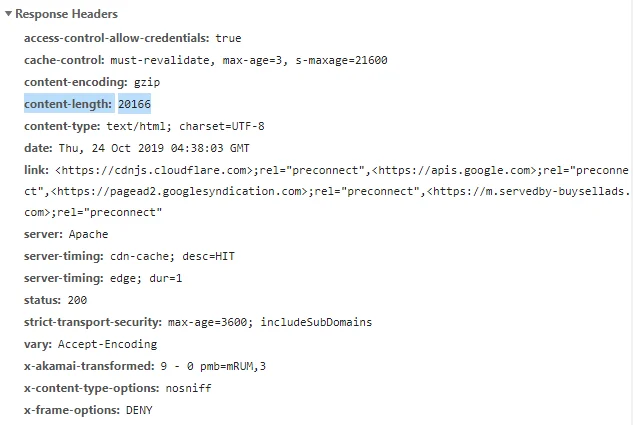HTTP status codes play a pivotal role in signaling the result of client-server communications. While many are familiar with common codes like 200 or 404, lesser-known ones, such as 411, can introduce operational challenges if not properly understood.
Although rare, the 411 status code signals a very specific server requirement, one that can quietly cause integrations to fail or APIs to reject valid-looking requests.
For business-critical systems, understanding this code is essential to maintaining seamless communication across services.
This blog will dissect the 411 error, explain why it occurs, and offer clear guidance on preventing it.
Table of Contents
What Is the 411 Status Code?
The 411 HTTP status code stands for “Length Required.” It indicates the server refuses to process a request because the Content-Length header is missing.

This header defines the size of the request body in bytes, allowing the server to anticipate the data load it must handle.
Let’s say a client sent a request that typically carries a payload (such as POST or PUT) but omitted the Content-Length header. In that case, compliant servers may respond with 411 to enforce stricter protocol handling.
This status code is categorized within the 4xx range, which denotes client-side errors. It serves as a safeguard against potential abuse, malformed requests, or uncertainty around resource consumption.
Unlike general client errors, such as 400, the 411 error is highly specific in scope. While it doesn’t indicate server malfunction, it does halt the intended transaction until the required header is included.
Understanding this requirement is crucial in environments where API compliance and efficient payload management are vital.
Why and When Does a 411 Error Occur?
A 411 error typically occurs when a client sends a request containing a body (such as POST, PUT, or PATCH) without the Content-Length header.
Since the server cannot determine how much data it should expect, it preemptively rejects the request to avoid uncertainty or abuse. It often results from misconfigured HTTP clients, outdated libraries, or overly strict server-side validations.
Many HTTP/1.1 servers enforce the presence of Content-Length as part of their request-handling rules. These configurations exist to make sure that data transfer is predictable and prevent issues caused by incomplete or chunked uploads.
In contrast, HTTP/2 environments may handle such scenarios differently, but legacy systems remain reliant on this explicit metric.

This error is particularly common in custom API implementations, especially when proxies or gateways strip or mishandle headers during transit.
Business-critical platforms using load balancers or content filters should remain especially vigilant, as these intermediate layers may inadvertently introduce 411 conditions even if the original client was correctly configured.
Technical Implications and Risks of a 411 Response
Understanding the consequences of a 411 response is essential for maintaining robust data exchange between clients and servers. The lack of a Content-Length header can introduce both operational and security concerns that must be addressed proactively.
- Request Rejection and Data Loss: Without a Content-Length header, the server discards the request entirely. This results in transaction failure, potentially disrupting user workflows or automated processes.
- API Contract Violations: Many APIs explicitly require payload size declarations. A 411 status breaks expected communication patterns, making the API appear unreliable or buggy from the client side.
- Security Vulnerabilities: Absence of length headers can be exploited in certain attack vectors, such as Slowloris-style attacks or buffer manipulation attempts, prompting stricter server rules.
- Proxy and Middleware Failures: Intermediate layers like gateways or reverse proxies may block or alter requests lacking proper headers, propagating 411 errors even if the client appears compliant.
- Monitoring and Debugging Delays: Errors caused by missing headers are not always self-evident. Diagnosing 411 responses consumes valuable developer time, especially in distributed systems.
These risks are amplified in business-critical infrastructures, where request reliability and uptime directly impact user experience and revenue flow.
How to Fix or Prevent a 411 Error
Addressing a 411 error involves ensuring the correct headers are consistently transmitted. While the issue may seem client-side at first glance, it’s often a result of overlooked configurations across multiple layers. Below are solutions based on various roles.
For Developers
Ensure that the HTTP client or library used explicitly sets the Content-Length header when sending request bodies. Some modern libraries do this automatically, but manual enforcement is necessary in low-level implementations or when overriding defaults.
For Server Administrators
Review and adjust server configuration to allow chunked transfer encoding if appropriate, or enforce stricter compliance where security is a concern.
In Apache, for instance, specific modules like mod_security may reject requests without size declarations. Adjust these settings carefully and document the behavior for your dev team.
For API Designers and Providers
Include Content-Length requirements in API documentation. Use schema validation tools that verify header presence during pre-deployment testing. Consider implementing graceful fallbacks or clearer error responses to inform clients of missing headers.
Only API Documentation Tutorial You Will Ever Need
For Client-Side Tools and Integrators
If using tools like Postman, curl, or frontend libraries like Axios or Fetch, manually inspect outgoing headers during debugging. Ensure middleware or browser extensions aren’t stripping or modifying headers.
This is especially crucial when working behind corporate firewalls or VPNs, which often introduce header-altering proxies.
Consistency in header transmission, testing at every level, and well-documented API standards go a long way in eliminating the risk of recurring 411 errors.
411 vs Similar Status Codes
The 411 status code is often confused with other client-side HTTP errors, especially when examining failed requests or debugging API transactions. Understanding how it differs can help isolate the root cause more efficiently.
| Status Code | Name | Trigger Condition | Key Difference |
| 400 | Bad Request | Malformed syntax or invalid request | Generic; not specific to headers |
| 411 | Length Required | Missing Content-Length header in requests with body | Specific to missing length headers |
| 413 | Payload Too Large | Request body exceeds server-defined limits | Focuses on excessive length, not absence |
| 415 | Unsupported Media Type | Incorrect or unaccepted media type in the request body | Deals with media type, not content size |
Real-World Use Cases and Examples
411 errors often surface in contexts where structured data exchange is critical. Below are examples illustrating typical conditions.
E-commerce Platforms
A product upload API may reject image uploads if the request lacks a Content-Length header, leading to broken listings or failed batch imports.
Fintech Applications
Payment gateways often enforce strict request validation. A POST request without length headers could be denied, interrupting transaction submissions mid-process.
Internal Enterprise APIs
Microservices within an enterprise architecture may trigger 411 responses if internal consumers misconfigure their HTTP clients, especially during CI/CD automation or third-party integration testing.
These situations highlight how the absence of a single header can affect both user experience and business operations, particularly when scaling or automating backend services.
Best Practices for Avoiding 411 Errors
The following habits can reduce preventable disruptions and ensure a smooth data exchange lifecycle:
- Always include Content-Length in requests with a body.
- Validate headers during client-side unit and integration tests.
- Configure APIs to provide clear feedback when headers are missing.
- Use consistent libraries that auto-manage headers properly.
- Document HTTP requirements in the API onboarding material.
- Implement logging and monitoring to detect and diagnose header-related failures.
Conclusion
The 411 status code might appear minor, but its impact can ripple through critical systems. Business owners can avoid costly errors and ensure smoother API integrations by understanding its triggers, implications, and solutions.
Proactive header management is key to long-term stability in modern web infrastructure.


